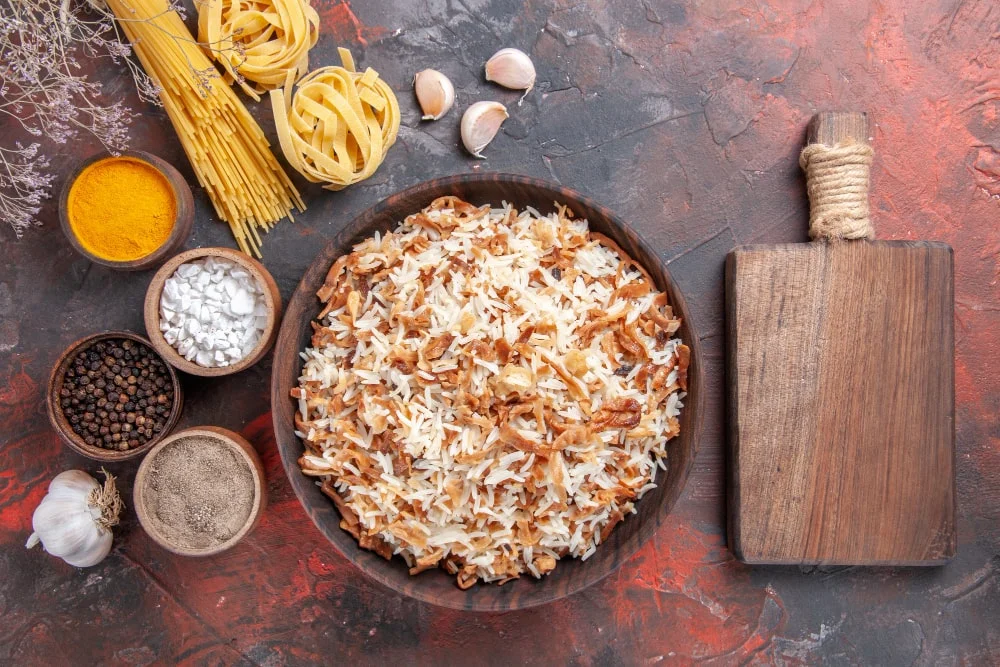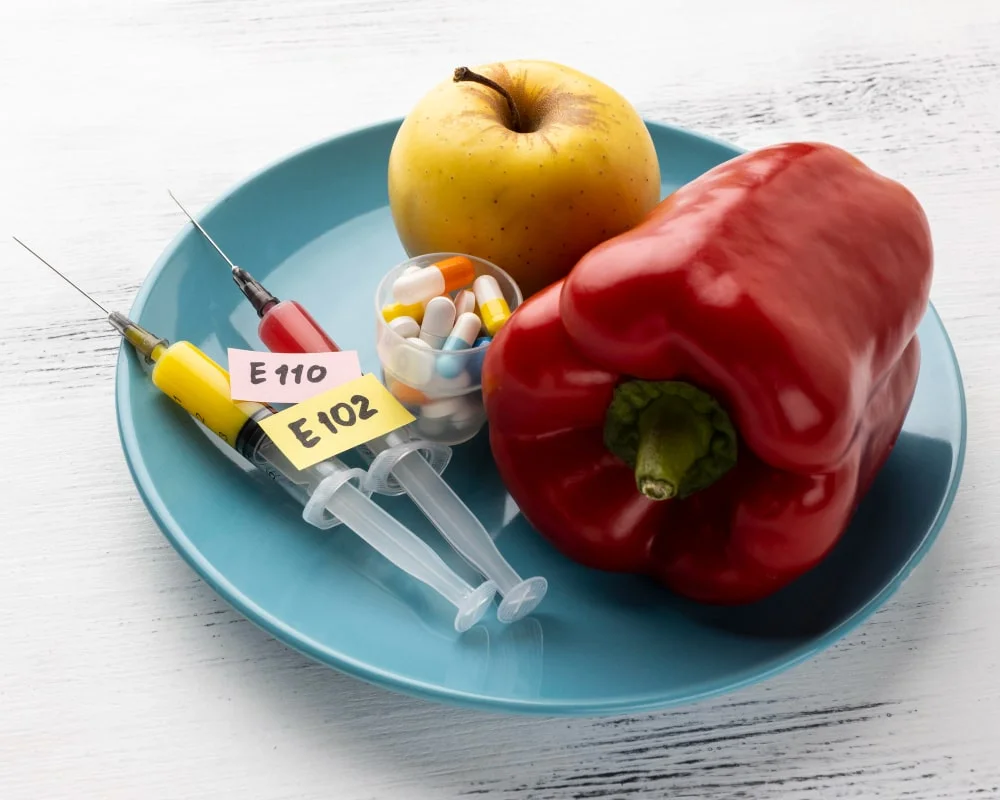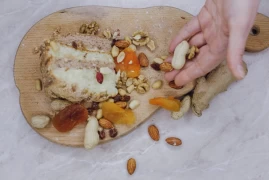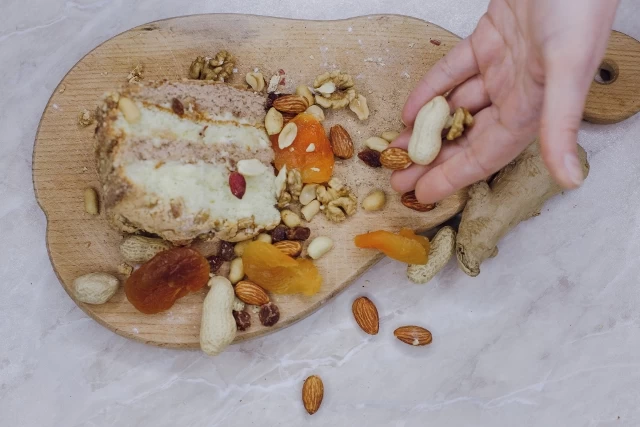
Can We Be Exposed to Aflatoxin When Consuming Spices, Nuts, and Dried Fruits?
- Can We Be Exposed to Aflatoxin When Consuming Spices, Nuts, and Dried Fruits?
- What is Aflatoxin?
- Aflatoxin Problem in Foods
What is Aflatoxin?
Aflatoxins are highly toxic secondary metabolites produced by Aspergillus flavus (Asp. flavus) and Aspergillus parasiticus (Asp. parasiticus) molds. This group of mycotoxins, which particularly affects the liver, poses a risk in many food groups such as nuts, dried fruits, spices, herbal teas, and grain products.
Aflatoxins, especially aflatoxin B1, are carcinogenic (cancer-causing) and mutagenic (causing mutations in the genetic chain). Epidemiological studies have shown a higher incidence of primary liver cancer and cirrhosis in populations consuming aflatoxin-contaminated foods. Additionally, teratogenic (causing abnormalities during pregnancy) and immunosuppressive (weakening the immune system) effects have been demonstrated in animal studies.
The main factor that shortens the shelf life of dried foods is mold growth. Mold development can start on tree branches and continue in the field. After harvesting, if the products are divided into piles and stored or improper drying methods are used, mold growth can persist. Moreover, storing products in nylon bags for extended periods or inappropriate storage and transportation conditions can increase mold formation. Particularly, during storage of high-risk foods under improper humidity-temperature conditions, toxin formation can occur and rapidly contaminate the entire batch.
Mold growth is visible, but detecting aflatoxins with the naked eye is very difficult. While a moldy food can be risky in terms of aflatoxins, the absence of visible mold does not guarantee the food's safety in terms of aflatoxins.
Aflatoxins are highly heat-resistant and cannot be eliminated by processes such as heating or cooking food. Therefore, consuming aflatoxin-safe food is the only reliable way to prevent aflatoxin exposure.
Aflatoxin Problem in Foods
Aflatoxins are the biggest food safety issue in the export of nuts and dried fruits. The aflatoxin problem in Turkey gained attention when 10 tons of shelled hazelnuts sent to Canada in 1967 and pistachios exported to the USA in 1971 were rejected due to aflatoxin contamination.
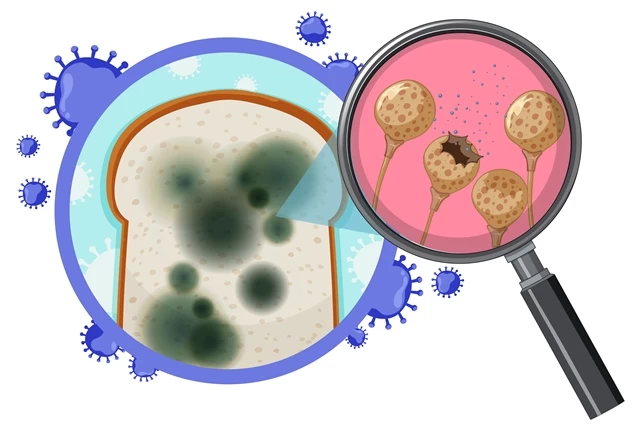
Aflatoxin Data with RASFF (Rapid Alert System for Food and Feed)
RASFF (Rapid Alert System for Food and Feed) is an international system aiming to ensure food and feed safety by enabling rapid information sharing among EU member countries and taking precautions against all potential risks related to food and feed. Returns due to aflatoxins in products circulating among EU countries and the countries of origin of these products are announced on a daily basis in the RASFF system. The majority of unsuitable batches of plant products from Turkey to EU countries are due to aflatoxins.
The table below shows the most reported danger categories and countries of origin. As seen, we are among the top 10 countries with the most notifications in the aflatoxin danger category in the dried fruit and nuts group.
The limits of aflatoxins in food should be closely monitored, and food safety management systems should be established in businesses, ensuring that products are subjected to analysis before being introduced to the market. (Source: RASFF 2021 annual report)
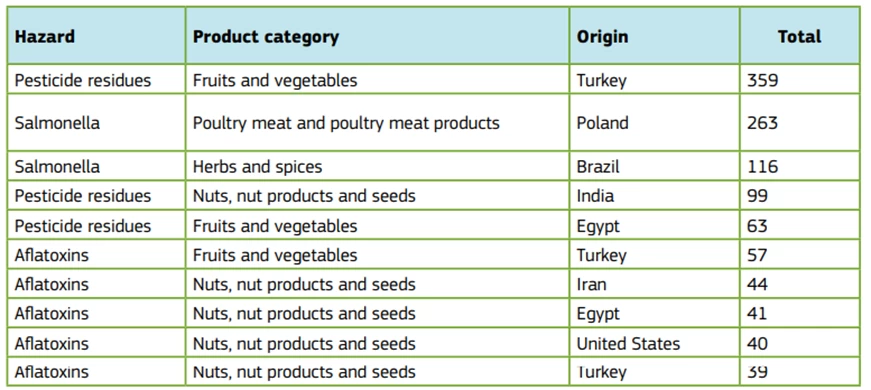
Even though first-class products are analyzed before being sent to European countries - otherwise, returns cause significant economic damage - numerous feedback regarding aflatoxins are reported in border controls, indicating insufficient supervision in the domestic market.
Furthermore, the public is not openly informed about what is done with the tons of returned products, raising the question of whether these products are being sold in the domestic market.
Taking precautions to protect against aflatoxins include shopping from reliable places where aflatoxin analyses are conducted, avoiding products that are not stored properly or sold in open-air environments, and storing purchased foods at home under suitable conditions (cool and dry environment).

